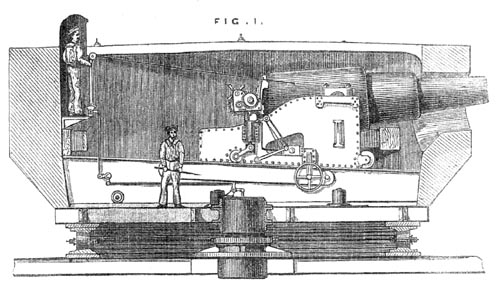
Gun Turret fig 1, Ready to Fire.
| History | Details | Hi-res scans | Specifications |
When built, Cerberus was fitted with four 18 ton guns, 2 in each of the 2 turrets. Although built at the Royal Gun Factory in Woolwich they are generally described as Armstrong Guns as they were built on the Armstrong pattern. In 1872 The Mechanics Magazine described these guns as "the most magnificent guns in the world". The gun barrel had a bore of 10 inches and was rifled. The rifling gave the gun accuracy and targets were regularly hit by the gun crews on Cerberus.
Muzzle loading, the four guns were the Mark I version of which at least 25 were built. Built in 1869 the guns were fitted to Cerberus in 1870. Although test fired at Woolwich the Franco-Prussian war caused such concern that Captain Panter decided to leave for Victoria before on board test firing of the guns could be carried out. The first test firing on board Cerberus took place on 26 August 1871 in Port Phillip Bay.
The Treatise on the Construction & Manufacture of Ordnance in the British Service published in 1877 stated that the Mk I version "was introduced in 1868 for the Navy as a most powerful broardside gun".
As the guns on Cerberus were never upgraded, she still has her original pattern guns. Being muzzle loading the barrel had to be short enough so that the muzzle could be reached from within the turret. Only when breech loading guns were introduced could barrel length and hence range be extended.
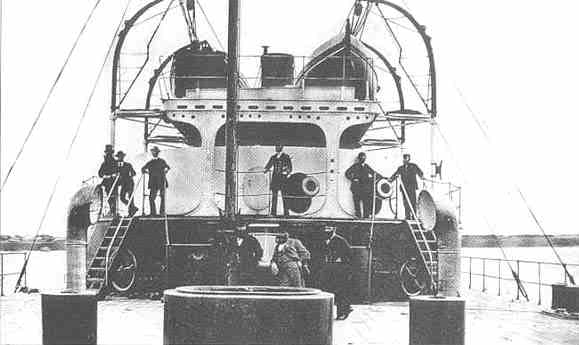
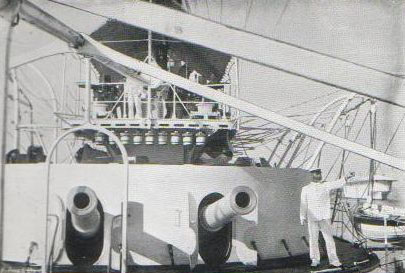

During the Easter Manoeuvres of 1872 Cerberus fired 114 shots and at one stage each gun was firing one shot (albeit untargeted) every 1½ minutes. The guns, which were electrically fired, could fire traditional round shot as well as various shells, including shells with time fuses.
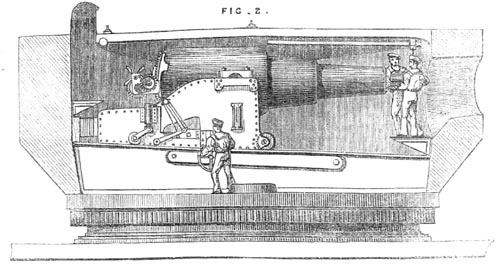
In 1884 the right gun in the aft turret suffered a cracked barrel when a shell burst on leaving the barrel. This gun was replaced with another Mark I gun. The damaged gun was sent "home" to Britain.
In 1897 the left gun in the same turret suffered a cracked trunnion.
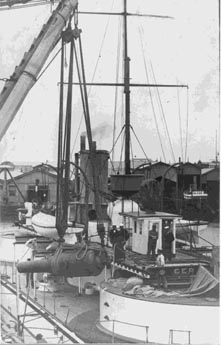
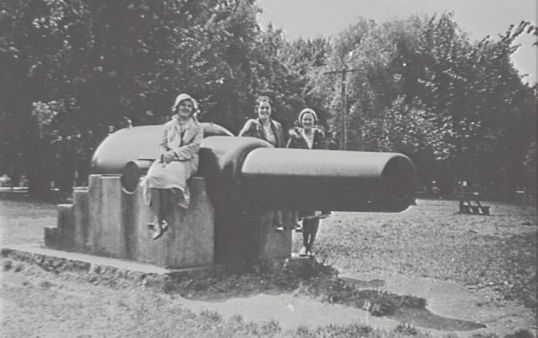
When repairs were not possible the damaged gun was mounted on the foreshore of Lake Wendouree and eventually sent to HMAS Cerberus naval base at Flinders in 1987. This gun was replaced by a Mark II gun shipped out from Britain.
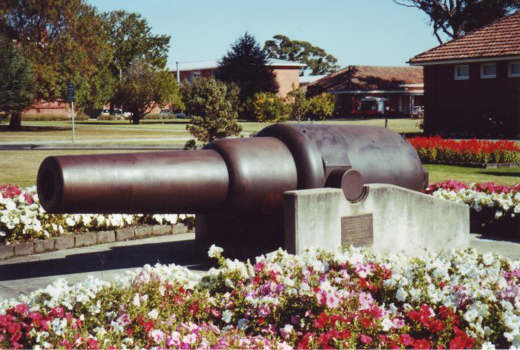
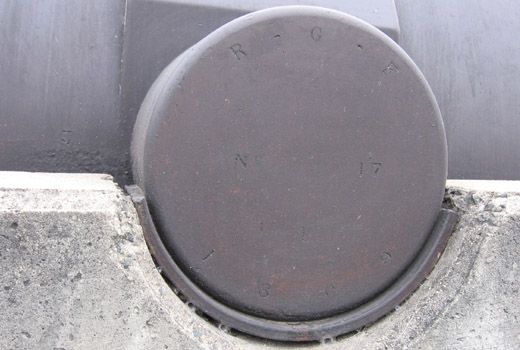
Both guns in the fore turret escaped damage until attempts were being made to scrap the ship in 1924. A buildup of gases from an oxy-acetylene torch caused an explosion breaking off the end of the barrel of the right hand gun.
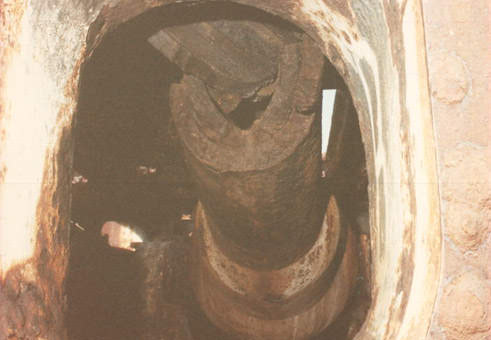
Throughout her career the guns were fired both independently and all at once (broadside). When firing broadside, as with other big-gun ships, such as Bismark, it was normal for some of the ship's fittings to be damaged. This was considered an acceptable price to pay for the damage that broadside firing could inflict on the enemy.
Click to read about Cerberus firing Broadside using the Director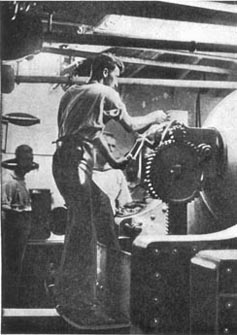
Being muzzle loading the guns were labour intensive and required 12 men to operate each gun. Although many plans were drawn up to replace the guns from 1884 until 1904 Cerberus was never re-armed. The colonial Victorian government was not interested in spending a lot of money on a ship about to be handed over to the new nation of Australia. The new Australian government, having promised the states all customs duties for the first 8 years of federation was not in a position to rearm Cerberus until 1909. By then the second set of boilers had been condemned and the engines were 40 years old.
Unlike her sister ship, Magdala, near sister ship Abyssinia and the larger versions HMS Devastation, HMS Thunderer and the fifth HMS Dreadnought, Cerberus never had her guns upgraded. Fortunately for us Cerberus is still fitted with the guns for which she was designed.
Gun DimensionsGUN SPECIFICATIONS (mk I)
4 Muzzle Loading Rifled (RML) Armstrong guns mounted in 2 turrets.
Calibre - 10 inches
Weight of Gun - 18 tons
Preponderance - 8 cwt
Length of gun - 15 feet
Length of bore - 12 feet 1 inch
Length of rifling - 118 inches
Range - 5.538 kms (70 lbs. charge firing a 410 lbs.
palliser shell, elevation 13o 12')
Muzzle Velocity - 1,379 f. s.
Rifling - increases from 1 in 100 calibres at breech to 1 in 40 at muzzle
Number of rifling grooves - seven
Rifling groove width - 1.5 inches
Penetration - 9 inches of armour plate at 1 km.
Electrically fired
Manual for Victorian Naval Forces 1887 - courtesy of "State Library of Victoria"
| Year Mfg. | Mark | Weight ton cwt qtr lb |
Number | Maker | Current location | Notes |
|---|---|---|---|---|---|---|
| Fore Turret | ||||||
| 1869* | I | 17-18-1-0 | 8 or 18 | Royal Gun Factory | HMVS Cerberus (left) currently on sea floor | |
| 1869* | I | 18-0-2-0 | 8 or 18 | Royal Gun Factory | HMVS Cerberus (right) currently on sea floor | damaged during scrapping |
| Aft Turret | ||||||
| ? | II | 17-18-2-0 | ? | Royal Gun Factory | HMVS Cerberus (left) currently on sea floor | installed 30/11/1898 |
| ? | I | 17-18-2-14 | possibly 24 | Royal Gun Factory | HMVS Cerberus (right) currently on sea floor | installed 12/02/1885 |
| Damaged Guns | ||||||
| 1869* | I | ? | ? | Royal Gun Factory | returned to Britain | damaged 26/8/1884 |
| 1869 | I | 18-1-0-0 | 17 | Royal Gun Factory | HMAS Cerberus Depot | damage noticed 16/9/1897 |
 Elevating 244 kb |
 Installing the 2nd replacement gun 547 kb |
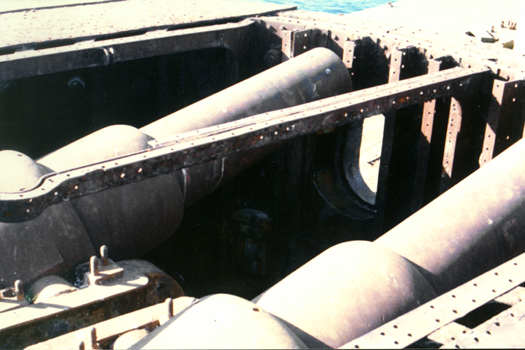 Guns in the Aft turret photo Peter De Gruchy 1991 3.82 mb |
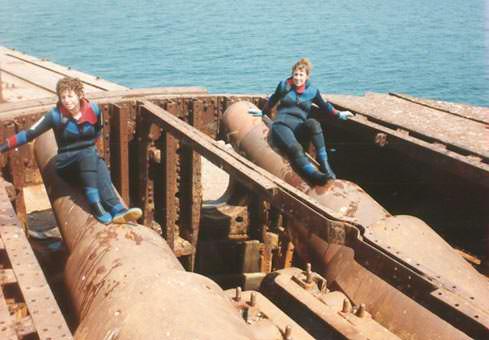 Divers Susan Newham (left) & Lynette Snow show the size of the aft turret guns photo courtesy of Glen Agnew 1989 74.8 kb |
 Aft turret guns photo courtesy of John King 1968 76.2 kb |
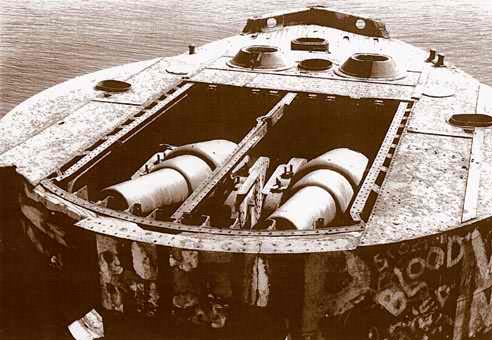 Aft turret guns photo courtesy of "City of Bayside" 355 kb |
 Turret Plan fig 1, Ready to Fire 244 kb |
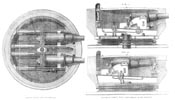 Turret Plan 956.2 kb |
 Turret Plan fig 2, Loading. 211 kb |
 "Friends of the Cerberus" logo 30 kb |
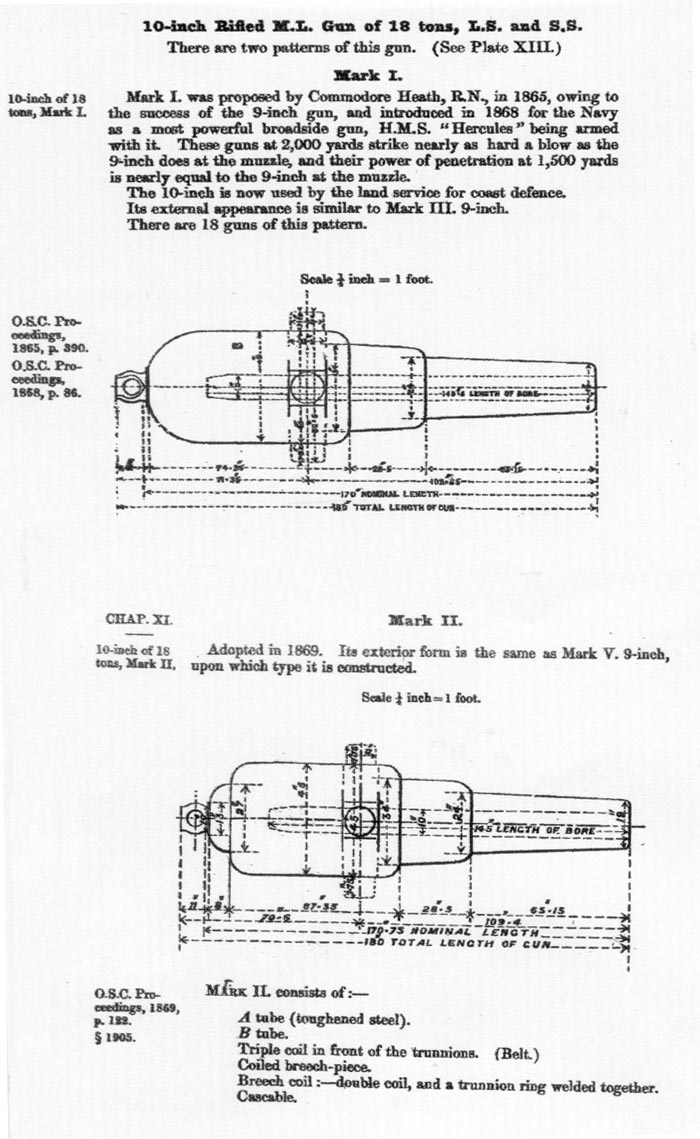 Gun dimensions courtesy of Peter Webster 125 kb |
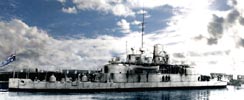 1904 Cerberus with a 2004 sky colourised by Kade Rogers (RAN) 255 kb |
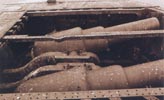 Aft Turret Guns photo by George Scott 111 kb |
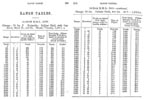 Range Table Manual of Victorian Naval Forces 1887 252 kb |
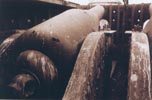 Mark II Gun, Aft Turret photo by George Scott 108 kb |